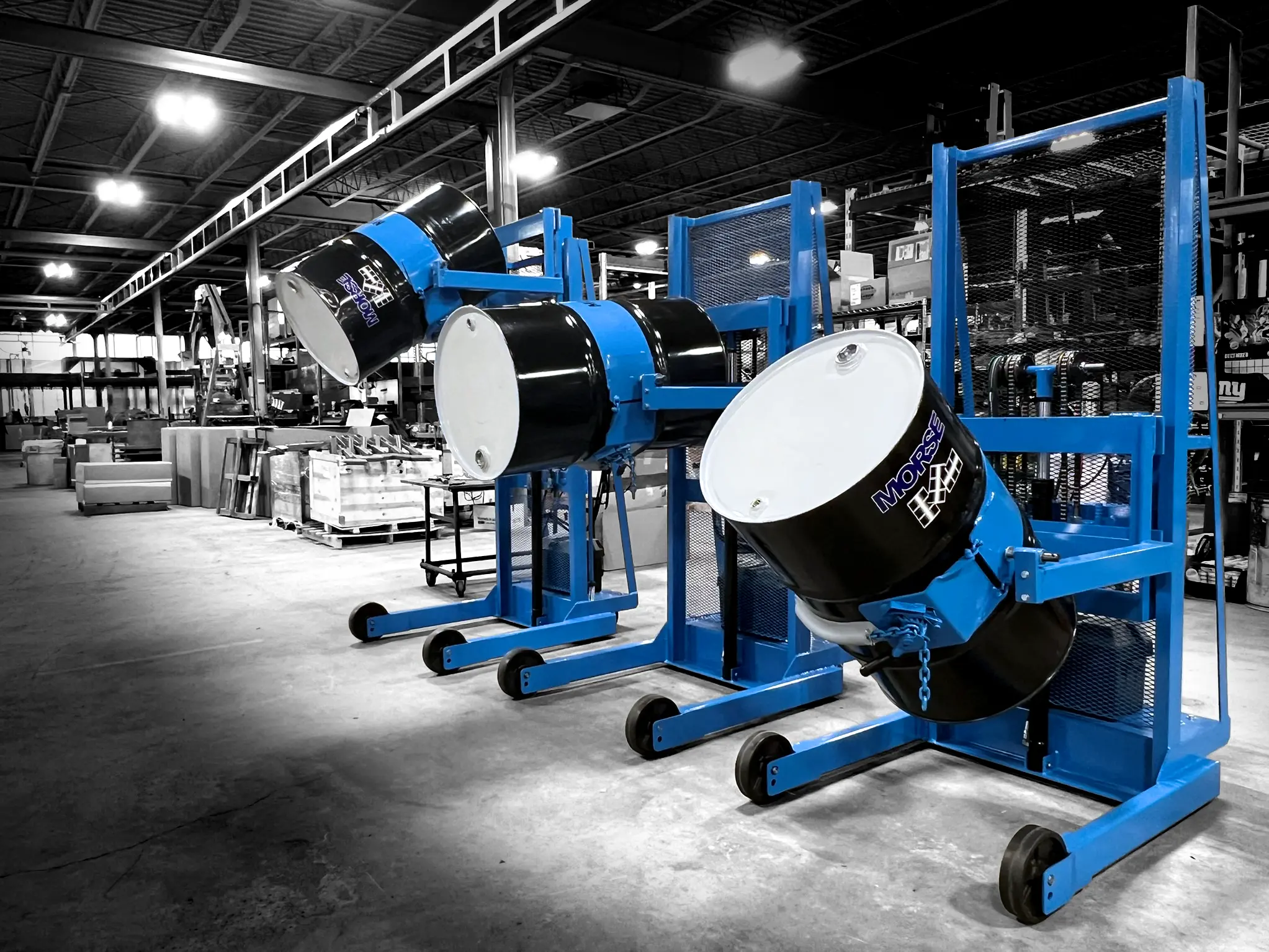Frequently asked questions
Please feel welcome to request a quote. Our engineers have designed drum equipment for many custom applications, and will consider requests for new ideas. Our engineering and new product development departments are equipped with the technology to develop, analyze and test custom drum handling equipment.
Recommended Spare Parts Kits are available for most current models. Find them in the Options section on the web page for your model number.
Heavy drums should always be moved with proper drum equipment specifically designed for that purpose. Mishandling a heavy drum can cause serious injury, damage the drum, waste valuable contents or contaminate the environment. All employees who handle drums should be trained in proper procedures and use of drum equipment.
The capacity of drum equipment for tilting a drum is reduced for a partially full drum due to the unbalanced and shifting load. A half-full drum is harder to tilt, and places more stress on the gearing and other components. The half-full rating of a drum handler indicates the capacity for tilting an unbalanced, bottom-heavy drum.
Yes, there are forklift attachments to handle your cardboard drums, also called fiber drums. They are made of paper in layers and may have metal rims. However, some have no metal parts.
For drum handlers with hydraulic drum lift, you may disconnect the air hose for moving. You only need the air hose connected to lift or turn the drum.
All Morse products are sold through our worldwide dealer network.
Your local Morse dealer can assist with your drum equipment needs. They can help select the best model for each drum handling application.
Designed to elevate to new heights
Offering the widest product line in the drum handling industry.
Contact

